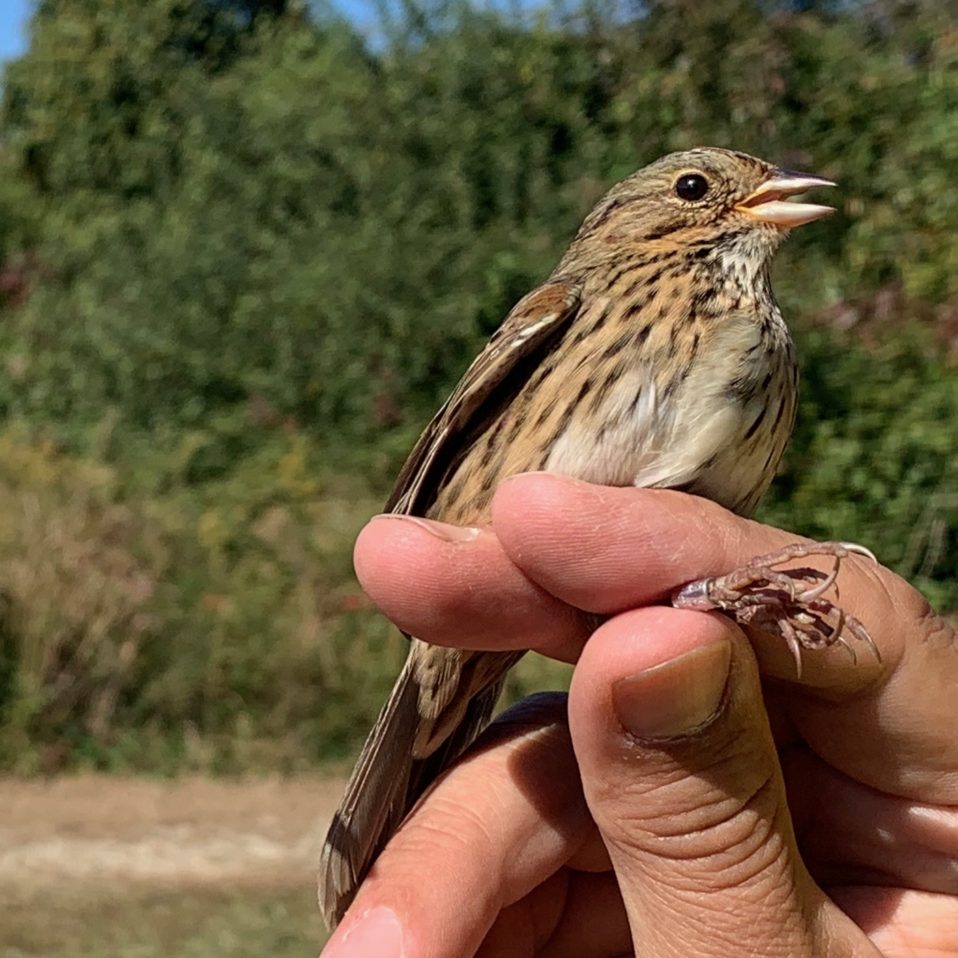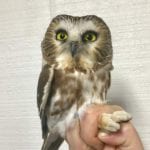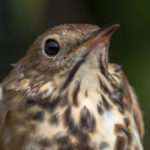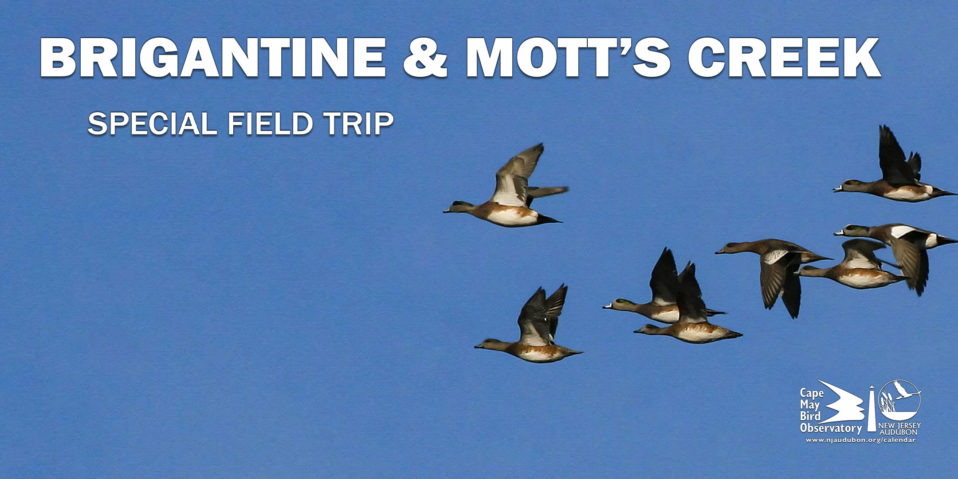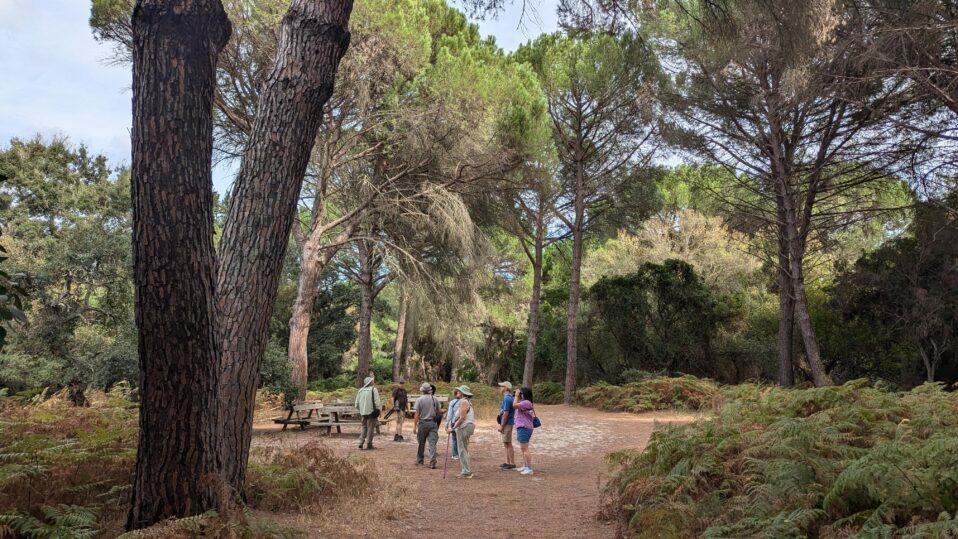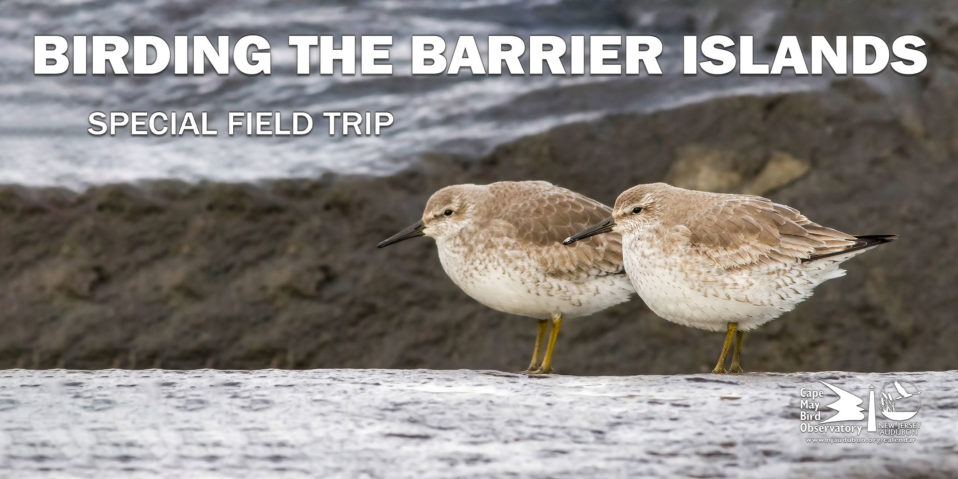Above: a stunning Lincoln’s Sparrow, one of several caught during our big sparrow days!
By Laura-Marie Koitsch, 2018 Bander In Charge
Having banded 253 new birds with only six nets open the previous day followed by Northwesterly winds all night, we suspected that week eleven was going to start off big. We just weren’t aware of exactly how BIG it could be! We had only opened a few nets on the morning of the 25th before birds started flying into the nets. In fact, they were flying into nets as we were opening them. Quickly assessing how many birds were in the area, we radioed the other team to see what net they were at & if they were seeing the same thing that we were. Once confirmed, we told them to immediately not open any more nets & to close any that they could. The best laid plans…we were having success last week using the bird hotels described in a previous post but, this morning we were catching almost all sparrows which are not suited for the bird hotels. Plan “B” was to switch to paper bags, something we had many of, and which make sparrow banding more efficient and recycle cloth bags out into the field more readily. To catch up on processing the early catch of sparrows we closed the nets for roughly an hour before reopening some of them for the remainder of the morning. Overall for the day we banded 659 new birds of 25 species. We had our first (and perhaps only) Bay-breasted Warbler of the season. We banded 130 Swamp Sparrows, 27% of which were adults and three particularly stunning males were still in breeding plumage. Talk about a treat to see! Once we reopened the nets, we began catching mostly Yellow-rumped Warblers (307) and we were able to start using the hotels again. All in all, it was an amazing morning. Those of us who have banded/ringed on different continents and on extremely large volume days, all agreed that what we witnessed that morning, both in sheer numbers of birds around the station and in teamwork, was some of the best that we’ve seen. It made this Bander-in-charge extremely proud of her team.
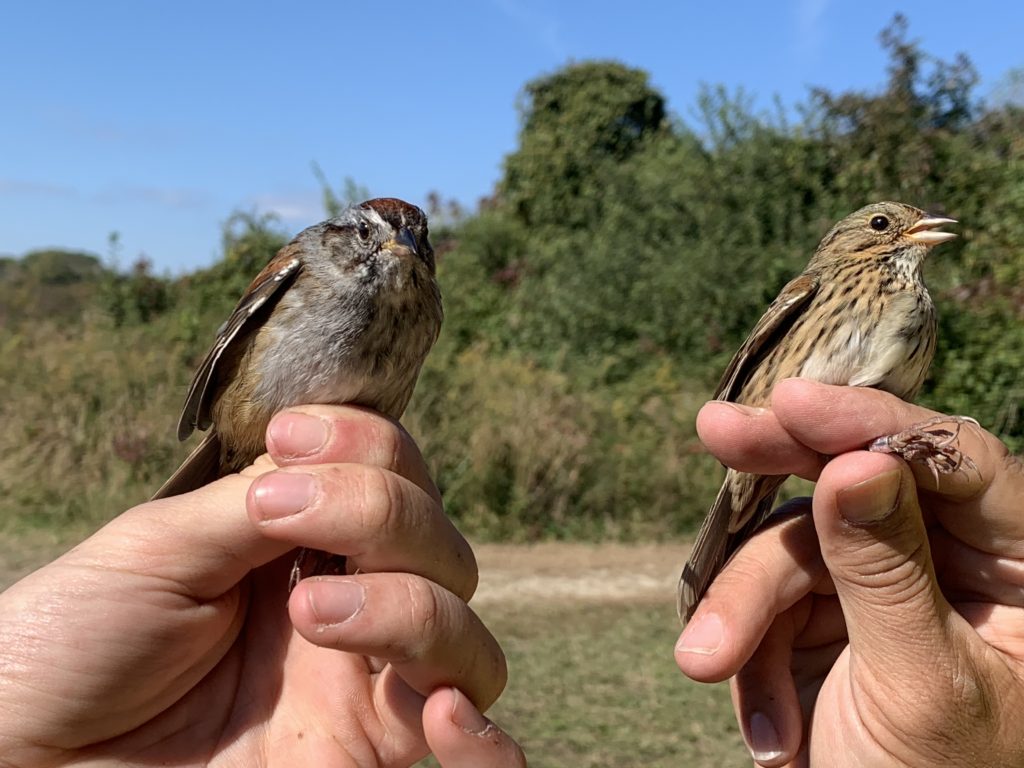
Swamp and Lincoln’s Sparrow side-by-side © David La Puma
Following up on such a big morning, it’s no surprise that October 26th was also a good morning for banding. Sadly, the 25th was Sarah’s last day at the station and she was going to be missed but, we still had an excellent team on the 26th and were able to band 355 birds of 19 species. Most of the newly banded birds were Yellow-rumped Warblers (241) and although we caught a few dozen sparrows, the crazy numbers that we had been seeing the previous morning were gone, presumably having moved on that night’s favorable winds.

interesting molt pattern of an after-second-year Myrtle Warbler, showing three generations of feathers including the retained juvenile A1 (1st Alula) and both adult alternate and basic plumaged feathers (especially apparent in the Greater Coverts)
There was no banding on the 27th or 28th due to weather. We decided to use the 29th as a “training day.” We only opened a small subset of the nets so that we could work one-on-one with volunteers interested in gaining more experience either at the nets or with banding. We processed 98 birds of 5 species; 94 were Yellow-rumped Warblers. October 30th was another big day where we saw a rather decent sparrow push around opening. We banded 407 new birds of 24 species including our first Fox Sparrow of the season! Fox Sparrows are absolutely stunning birds, whether in the hand or in the field so, this was definitely a real treat for everyone. We also caught three White-crowned Sparrows, one of which was a Western Taiga (Gambel’s) subspecies. We usually only catch the Eastern Taiga subspecies, so it was a nice to get an up-close look at the differences in their respective bill sizes & color as well as in their loral patterns.
On October 31st, also known as “Owl-o-ween”, our crew was treated to a large Snowy Owl and a yet-to-be-identified Blue Owl at the station when two of our banders came dressed up in their finest owl onesies. We processed 400 birds of 26 species, including our first Cedar Waxwing of the season. Highlights included a stunning male Cape May Warbler, a beautiful adult female Nashville Warbler, and a brightly colored Baltimore Oriole that surprisingly turned out to be a hatching year female. We had our fourth foreign recovery of the season, an adult female Yellow-rumped Warbler! We’ve submitted her band information to the Bird Banding Lab and are now just waiting to hear back on when and where she was banded. Also, of note is the recapture of the Carolina Wren from previous blog posts that we’ve dubbed “James Bond” due to its band ending in 007. Once again, it was found to be without its harness and transmitter. For those keeping tally, that’s the second harnessed LifeTag™ that this bird has now somehow managed to remove. Trick-or-treat, little wren! We know that you’ve got the “trick” part down now the “treat” is figuring out how you’re doing it so that the CTT engineers can improve their cutting-edge tech even further.

Happy Owl-O-Ween from the banding station!!!!
Week eleven of our inaugural banding season was once again an incredible week. We were able to band on five out of seven days for a total of 281 mist net hours (mnh). We had our highest weekly totals to date with 1,878 newly banded across 41 species. We had three first of season species including Bay-breasted Warbler, Cedar Waxwing, and Fox Sparrow. Although Yellow-rumped Warblers still dominated the totals with 1,143 individuals banded, Swamp Sparrows and Song Sparrows made an impressive showing with 235 and 186 individuals banded, respectively. As a team, we faced the challenge of the sparrow “fall-out” on the 25th together; we used the passion for teaching that our European young professionals had to further enhance the skills of our volunteers; we also said good-bye to Sarah Harris, the young professional from the UK, whose skills at the nets we were sure to miss.

the real star of Owl-O-Ween, this Northern Saw Whet Owl was visiting the meadows after hours, and so avoided our nets…for this week at least!
We recaptured 55 of our own previously banded birds across 9 species as well as one individual that was banded elsewhere by another bander. Two of the recaptures were individuals that we had banded back in August during our very first week, but which hadn’t been seen since then. As with newly banded birds, most of the recaptures were Yellow-rumped Warblers. Unlike earlier in the season with the Northern Waterthrush and with the Veeries, the Yellow-rumpeds that we are recapturing are showing very little to no weight gain. If these individuals are part of the population that over-winters here in Cape May then this would make sense as they would presumably not need to store fat if they’re not continuing on a journey south. More questions to answer and undoubtedly more surprises in the nets as we head into week twelve!
Week 11 Stats:
| SPECIES | NEW | RECAPS | TOTALS |
| Sharp-shinned Hawk | 2 | 2 | 4 |
| Cooper’s Hawk | 1 | 1 | |
| Yellow-Shafted Flicker | 2 | 2 | |
| Eastern Phoebe | 14 | 14 | |
| Blue-headed Vireo | 2 | 2 | |
| Blue Jay | 1 | 1 | |
| Carolina Chickadee | 1 | 1 | |
| Tufted Titmouse | 1 | 1 | |
| Red-breasted Nuthatch | 2 | 2 | |
| Brown Creeper | 4 | 4 | |
| House Wren | 1 | 1 | |
| Winter Wren | 2 | 2 | |
| Carolina Wren | 2 | 2 | |
| Golden-crowned Kinglet | 11 | 11 | |
| Ruby-crowned Kinglet | 32 | 32 | |
| Hermit Thrush | 41 | 1 | 42 |
| American Robin | 20 | 20 | |
| Gray Catbird | 34 | 1 | 35 |
| Brown Thrasher | 1 | 1 | |
| Cedar Waxwing | 1 | 1 | |
| Purple Finch | 4 | 4 | |
| Eastern Towhee | 1 | 1 | |
| Chipping Sparrow | 4 | 4 | |
| Field Sparrow | 11 | 11 | |
| Savannah Sparrow | 4 | 4 | |
| Fox Sparrow | 1 | 1 | |
| Song Sparrow | 186 | 186 | |
| Lincoln’s Sparrow | 6 | 6 | |
| Swamp Sparrow | 235 | 1 | 236 |
| White-throated Sparrow | 61 | 61 | |
| White-crowned Sparrow | 7 | 7 | |
| Slate-colored Junco | 5 | 5 | |
| Baltimore Oriole | 1 | 1 | |
| Ovenbird | 1 | 1 | |
| Black-and-White Warbler | 1 | 1 | |
| Nashville Warbler | 2 | 2 | |
| Common Yellowthroat | 15 | 15 | |
| Cape May Warbler | 1 | 1 | |
| Bay-breasted Warbler | 1 | 1 | |
| Blackpoll Warbler | 1 | 1 | |
| Black-throated Blue Warbler | 1 | 1 | |
| Palm Warbler | 11 | 11 | |
| Yellow-rumped (Myrtle) Warbler | 1,143 | 45 | 1,188 |
| Northern Cardinal | 4 | 2 | 6 |
| TOTALS | 1,878 | 56 | 1,934 |
Total species this season: 98
Total birds banded this season: 7,179




